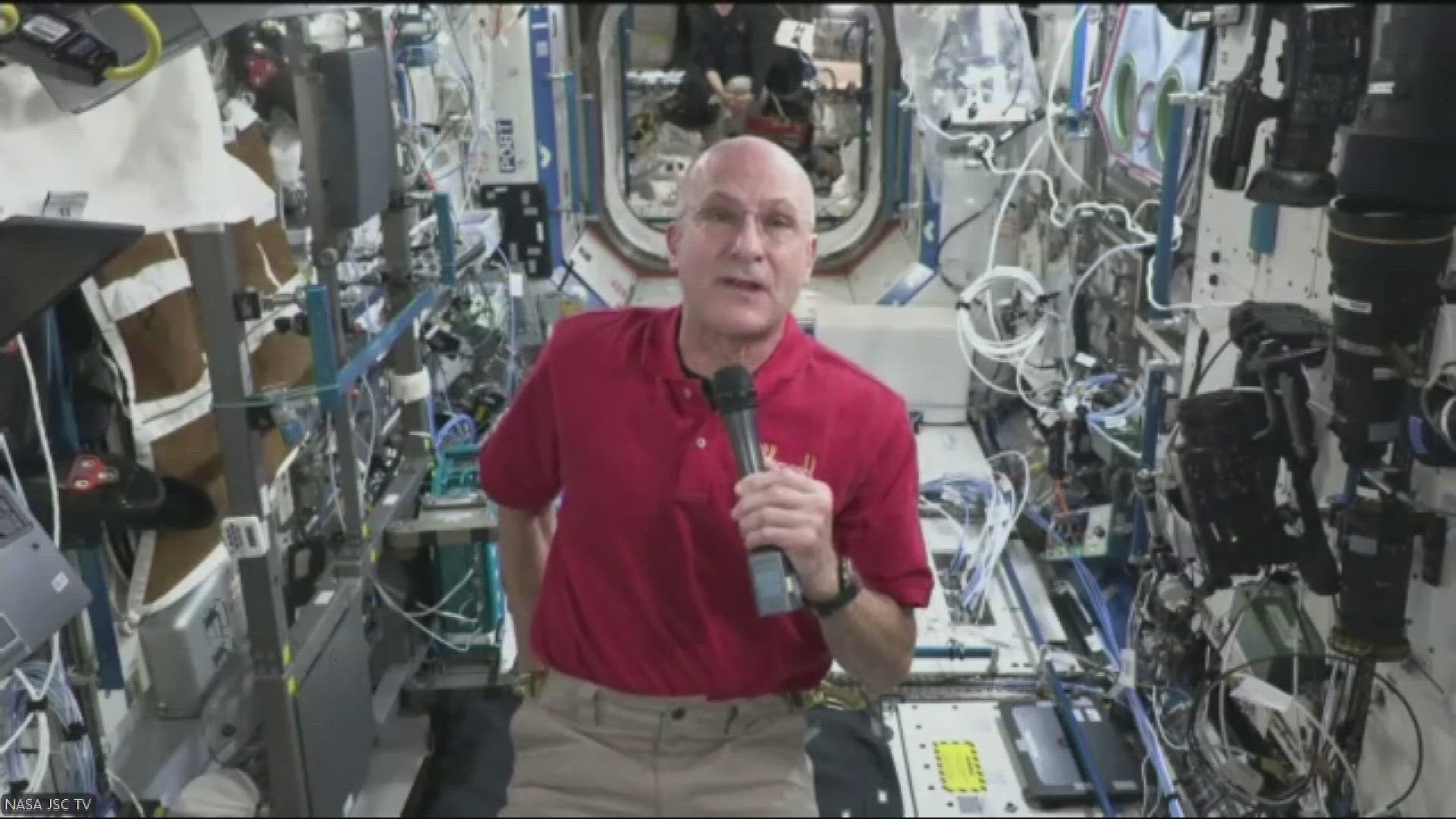PORTLAND, Ore. — Don Pettit is no stranger to space — he's spent more than a year living at the International Space Station, but his love of space started long before he joined NASA's space program.
"I learned that love for space in good old southern Oregon as a kid growing up." Pettit said.
He says he would stare into his telescope with a 3-inch lens and stare into the dark Oregon skies as a kid, marveled at what was up there. He studied mathematics and science and graduated from Oregon State University with a Bachelor of Science in chemical engineering and a doctorate in chemical engineering from the University of Arizona.
Pettit was selected for NASA's space program in 1996 and made his first trip to the International Space Station as part of Expedition 6 in 2003. He went again in 2008 and 2012 as part of Expedition 30/31.
In September, he marked his fourth trip to the International Space Station.
"I like to refer to station as my home, my second home, and it's really that way," Pettit told KGW in an interview over Zoom in the ISS. "Being here now, you rapidly reacclimate to being in microgravity environment or being weightless."
He and two Russian cosmonauts joined an already crowded space station with nine other people.
"It's supposed to be a crew of seven. For the last month I've been here, it's either been 11 crew members or 12 crew members, so it's a pretty packed place." Pettit said.
Suni Williams and Butch Wilmore have been stationed at the ISS since June. What was supposed to be a week-long stay has kept the two astronauts at the ISS until February due to issues with their original return flight.
Pettit has been in their shoes before: On two previous missions, he was forced to stay longer than intended, and at times, that meant having to ration food and clothing.
"This time, we're supply aplenty even for 12 people. We have so much food; we can eat as much as we want. We've got clothing; we've got water." Pettit said.
The International Space Station is a large laboratory orbiting in space. Astronauts are like grad students at a university performing experiments, but miles above the earth in zero-gravity. Each mission, astronauts can perform anywhere between 150-200 different experiments. Pettit says he's looking forward to studying nano-particles and some of the combustion experiments they have.
During a mission in 2012, Pettit helped create and test a zero-gravity coffee cup that was designed alongside a Portland State professor and his students. Pettit co-owns two patents on the idea.
"Mark Weislogel came up with the idea, and I implemented it during STS 126 and made a prototype — actually two prototype versions — of the zero G cup, and it allows an open container to be used in a manner commensurate with how we use open containers on earth" Pettit said. "I'm not only planning on using it to enjoy a cup of coffee, but I'm also planning to use it for a number of fluid physics demonstrations."
Pettit loves to show off experiments in space on his social media channels; during previous missions, he's shared those on his social media pages.
On X (formerly Twitter), he shares photos of Earth as seen from the station and says the views never get old: "You never get tired of looking at Earth from space or looking at the atmosphere on edge and the stars and other celestial things you can watch. You can see things like the moon and the stars and the planets."
He's also seen devastating hurricanes form in the Gulf of Mexico in his short time during his latest mission.
"When you see events like that, it lets you know who's in charge of this planet and who wields the greatest force is. It's not human beings. It's Mother Nature," he said.
When he was asked what most people may not know about the station, he gave an example of what seems like a normal thing for people to do on Earth but is harder to do in space.
"Say you're around the galley table and you've got a packet of food and you want to cut open the packet and you have this little, tiny flap that you've cut off this little, tiny packet of food. What do you do with that little, tiny flap?" he asked. "It's too small to put in a normal trash can. If you put a small thing in like that, the act of removing your hand from the trash container creates enough of an airflow that the little, tiny piece will follow your hand out and it's like you stuck it back in, you pull your hand out, it comes out again."
Pettit said instead of throwing it away and risk it escaping, they use a common item found in many households: a baby wipes container.
"They're perfect for putting in little, small bits of trash. We keep these staged in various places around station," he said. "When you have a little flap of trash, a little bit of tape, a little nut or a bolt, and you want to get rid of it, you put it inside one of these wet wipe containers, and then when that gets full, you put the wet wipe container into one of our larger trash bags."
Pettit, 69, doesn't talk retirement. Instead, he looks forward to doing it all again: "This is not my last mission; this is my next mission. Who know what's going to happen after this mission?"

